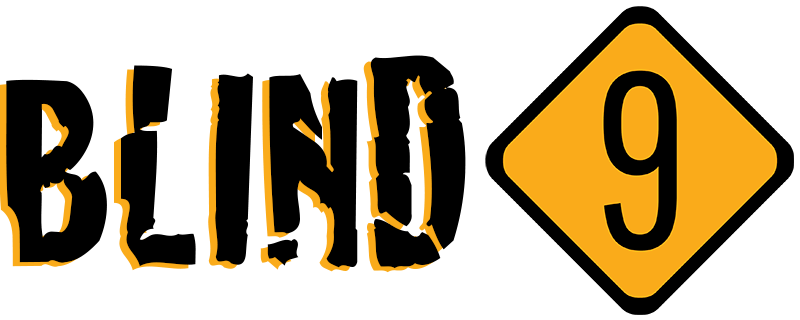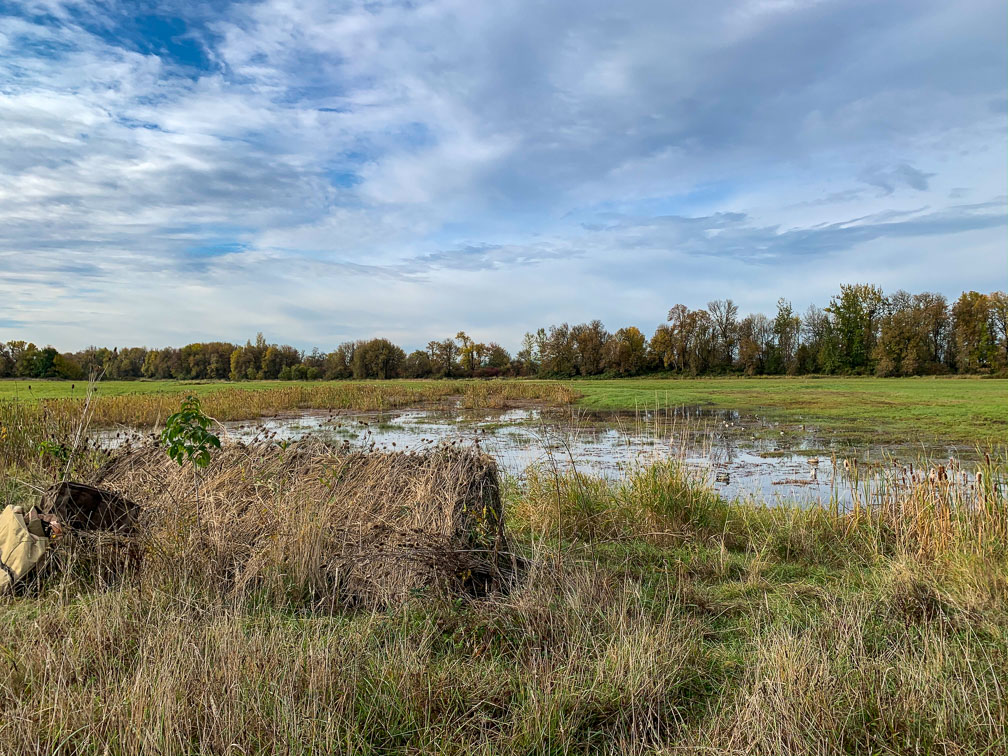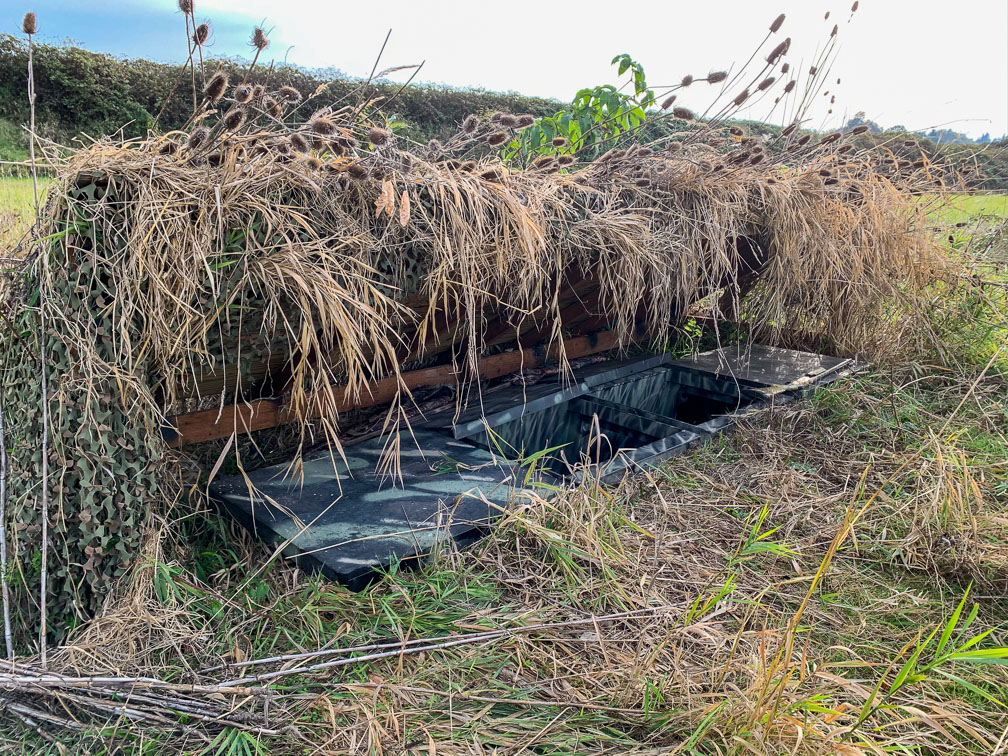Blind 4 at Ridgefield sits at the northeast corner of the refuge and used to be my favorite. But for the 2015/16 season the blind was moved because of complaints from residents bordering the east side of the refuge who would report shot hitting their homes from hunters at this blind.
Its new location has the blind facing west, away from the houses, with a small pond dug out in front and extending slightly to the left side of the blind.
It’s a relatively new pit blind, with a lean-to cover and room for three hunters in one vault along with a dog box and some storage beneath the box. It also features some built-in hooks and steps. It appears to be of the same design as Blind 12. Both were donated by the Lower Columbia Chapter of the Washington Waterfowl Association.
The pond in front of the blind was tilled up for the 2015/16 season. I attended a WWA meeting where the refuge manager explained that the tilling will make for a pond that does not attract very many birds during its first season. As long dormant seeds grow over the next few years the pond will become very attractive to ducks as it will contain a diverse mixture of plants and won’t be choked with grass. I got a chance to hunt it for the opener of the 2019-2020 season and can agree that it looks like it has recovered and turned into an attractive spot for dabbling ducks.
Hunting Style
This is a pretty typical ducks-over-decoy blind, where you get an opportunity, with only a couple of dozen decoys, to deny water for ducks on farther reaches of the pond and create a landing zone closer to the blind. Despite its limited production over the past few seasons, it does have some things going for it.
First, it’s location in the far northeast corner of the refuge means it gets first opportunity at any ducks jumping off lake river or blowing into the refuge from the north. Its relative isolation also means working birds are less influenced by shooting in nearby blinds, giving you more opportunity to lure birds before they get spooked.
Second, it’s an easy and mostly flat walk from the parking lot, so it’s friendly to hunters with mobility issues and for a carts laden with decoys.
Third, the pond is rimmed with cattails and other thicker brush now. It reminds me a lot of manmade stormwater filters that are mandatory in the construction of housing developments here in Clark County, WA. These pits fill with water and cattails and often hide a few mallards if you look closely. It’s not particularly large but just big enough to attract dabblers looking for a reedy place to plunk, feed, and rest.
Finally, the pond is shallow, about knee height at its deepest, and devoid of Nutria holes and other trip hazards that are common among many of the other blinds, especially those in the center of the refuge.
If you are thinking about this blind be prepared to cut some brush so you can try to cover the lean-to as much as possible.
Goose Opportunities
You can get a few goose flyovers since this is on the far north end of the refuge. You might be able to set up a spread for geese here, too, perhaps behind the blind or along the Northern part of the shore. But beware of shooting to the East, where your shot might fall on houses there. More complaints from homeowners there might mean an end to this blind.
Blind Details
Type: Covered pit, 3-person vault with dog box and storage.
Pros: Isolated location; little competition from other blinds; relatively short walk.
Cons: Has been on the bottom of production, but could be turning around. Small water.
2019 Note: This blind was moved for the 2015/2016 season and it has not been a very good producer since. I got a chance to hunt it for the 2019 opener and it seems to have recovered. Will it return to productivity? We shall see …
Hunting Log



2 Comments. Leave new
Hunted this early in the 2018 season. Laid out a small spread of teal and wigeon. I had several factors working against me on this hunt. For starters, it was a roost pond. There were 100+ ducks (mallards and teal, mostly) roosting on this pond, and they got up about 20 minutes before shooting hours. In addition, the cattails are so tall to the left hand side of the blind they obscure shooting lanes. Other blinds in the area (2, 5, and 6) had good days, but took a lot of ducks before they got to me. I had a total of six shots and no birds. Most ducks I saw were flying high toward Lake River after being spooked off of blinds 2 or 5.
Thanks for the update on 4. The birds were roosting on 2 as well. Same type of situation. Ten minutes before shooting time we got to watch 100 birds fly over us at 10 feet.